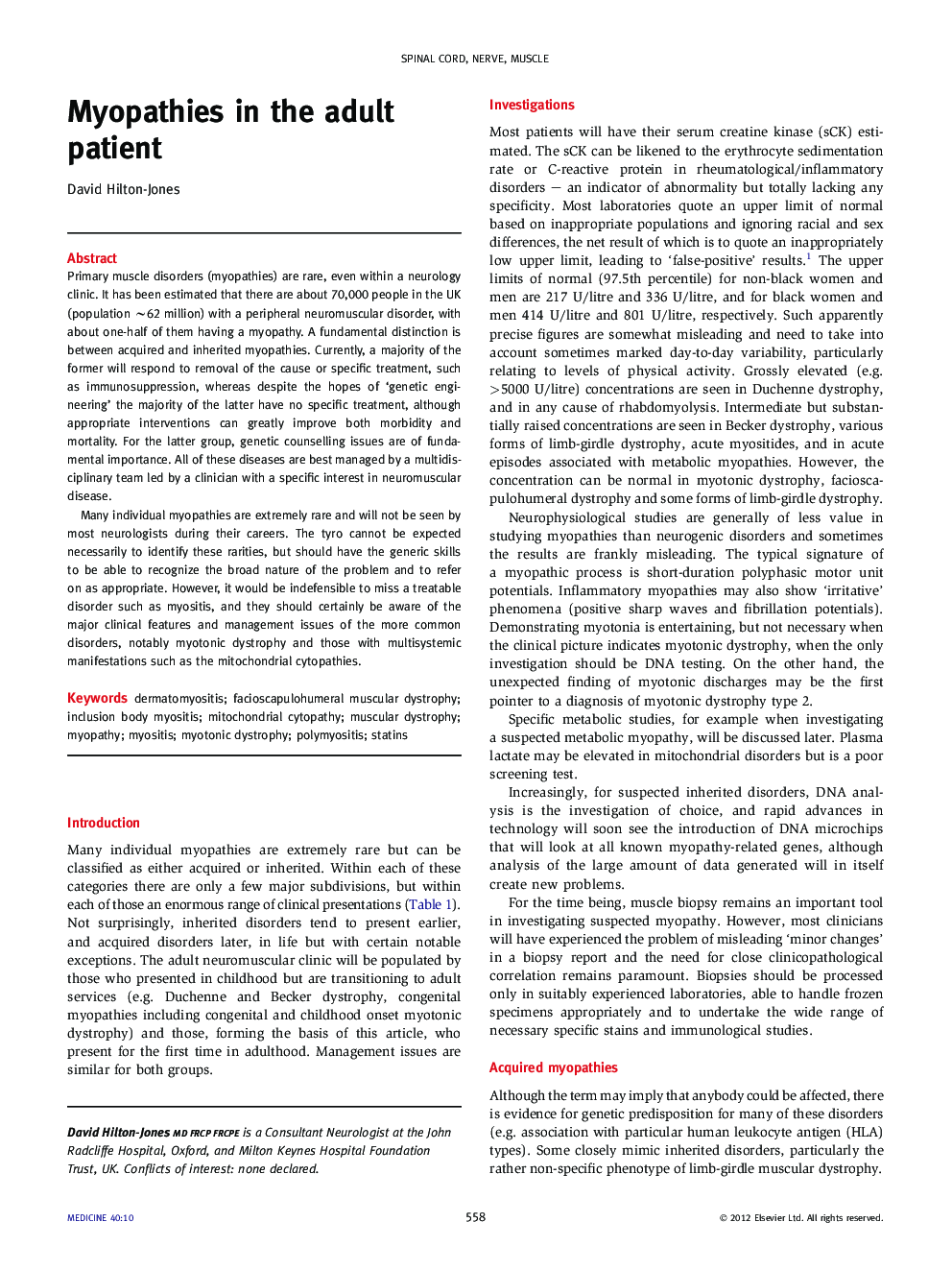| Article ID | Journal | Published Year | Pages | File Type |
|---|---|---|---|---|
| 3804011 | Medicine | 2012 | 8 Pages |
Primary muscle disorders (myopathies) are rare, even within a neurology clinic. It has been estimated that there are about 70,000 people in the UK (population ∼62 million) with a peripheral neuromuscular disorder, with about one-half of them having a myopathy. A fundamental distinction is between acquired and inherited myopathies. Currently, a majority of the former will respond to removal of the cause or specific treatment, such as immunosuppression, whereas despite the hopes of ‘genetic engineering’ the majority of the latter have no specific treatment, although appropriate interventions can greatly improve both morbidity and mortality. For the latter group, genetic counselling issues are of fundamental importance. All of these diseases are best managed by a multidisciplinary team led by a clinician with a specific interest in neuromuscular disease.Many individual myopathies are extremely rare and will not be seen by most neurologists during their careers. The tyro cannot be expected necessarily to identify these rarities, but should have the generic skills to be able to recognize the broad nature of the problem and to refer on as appropriate. However, it would be indefensible to miss a treatable disorder such as myositis, and they should certainly be aware of the major clinical features and management issues of the more common disorders, notably myotonic dystrophy and those with multisystemic manifestations such as the mitochondrial cytopathies.
